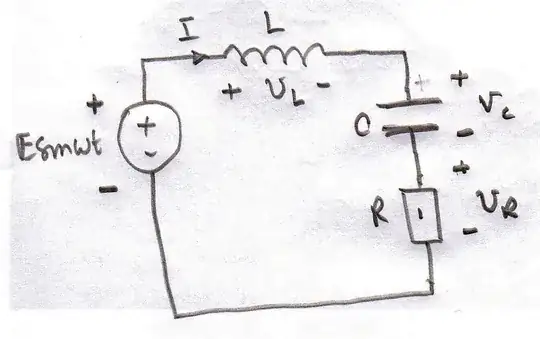I am having problems to determine the direction of the induced EMF in AC circuits. For example, we have an inductor of inductance $L$. The induced EMF is given by:
$$ \epsilon = - L \frac{di}{dt} $$
where the minus sign is "explained" by the Lenz law. But how do I apply this to an AC current. The direction of current is changing (usually by sine or cosine laws). See the following link:
http://en.wikipedia.org/wiki/RLC_circuit#Series_RLC_circuit
for a series LCR circuit. Here the equation is given by
$$ L \frac{di}{dt} + Ri + \frac{1}{c}q = \epsilon_0 \sin (\omega t) $$
How do I know the sign of the first term on the left hand side... ? Why isn't it for example:
$$ - L \frac{di}{dt} + Ri + \frac{1}{c}q = \epsilon_0 \sin (\omega t) $$
When is it + and when -... Furthermore, how do I know the sign of any of the terms? The current is changing periodically. Why can't it be:
$$ L \frac{di}{dt} + Ri + \frac{1}{c}q = - \epsilon_0 \sin (\omega t) $$
My initial guess is that this depends on the point in time that we choose, but that ultimately gives us different solutions...
